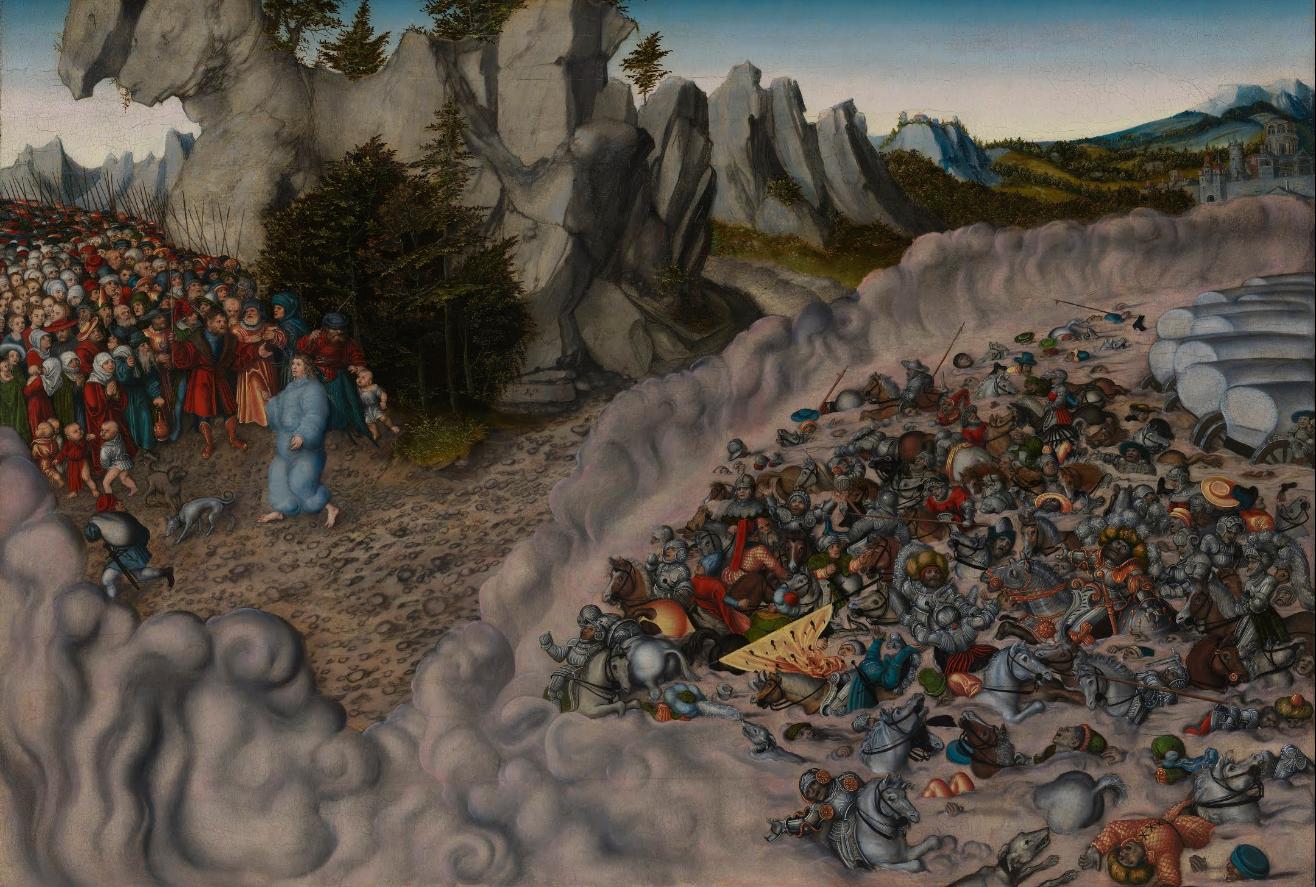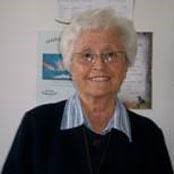
Parashat Beshalach
♦
Parashat Beshalach
Marie André Mitchell
16 January 2019
Parashat Beshalach (“when [Pharaoh] let [the people] go”) tells of the crossing of the sea, the culmination of the narrative of the Israelite sojourn in Egypt. This event is related in two versions, a prose account in 14:1-31 followed by a poetic account (called in rabbinic literature Shirat HaYam, “Song at the Sea”) in 15:1-22.
The prose version is influenced by many traditions. According to the earliest, the Yahwist tradition, (cf. vv 21b, 24-25, 27,) a dry wind sweeps back the waters allowing Israel to pass, while the Egyptians are caught up by the returning waters. The Elohist tradition relates in v.19 the presence of the angel of the LORD. The Priestly tradition (cf. vv 1a, 22-23, 26, 28-29) describes the crossing as a solemn liturgical action. Moses, as a priest, divides the water with his outstretched hand (African Bible p. 115)
Scholars have tried to reconstruct precisely what happened. While such matters are important to the historian, the Bible itself was concerned to demonstrate God’s power and concern for the Israelites and to portray Israel’s escape in terms of birthing. By breaking through the waters of the sea and emerging through the narrow passage Israel is born as a liberated nation (WTC p 400).
In the prose account the crossing of the sea is set forth in three sections, each introduced by “the LORD said to Moses’ (vv. 1, 15 26). The literary structure emphasizes God’s control of what happens and the whole account ends with “Israel saw the wondrous power which the LORD had wielded against the Egyptians … they had faith in the LORD and His servant Moses” (vv.30, 31). “Wondrous power” literally means the ‘great hand’ of God that cut off the tyrannous ‘hand of Egypt.’ The word for ‘hand’ (yad) is a key word in Chapter 14 occurring seven times. ‘Faith’ in the Hebrew Bible does not mean belief in a doctrine or creed. It refers to trust and loyalty expressed through commitment and obedience (EH p 405).
Moses’ song (15:1-22) is a triumphant song of thanksgiving for victory. “Then Moses and the Israelites sang this song to the LORD.” And God said, ‘for this I have been waiting” (Exodus R. 23:4). The song is more of a celebratory hymn than a record of the Exodus event. Without the prose version the sequence and details of the crossing would be unclear but, however, without the poetic one, the soaring emotion of escape and the realization of God’s role in deliverance would be lost (WTC p. 379).
For Reflection and Discussion: [1] When you are in a difficult position (as Israel was when facing the sea) do you react more with faith- or fear? [2] How would God’s glory be reflected in this miracle? In the Egyptians’ death? The Israelites’ salvation? [3] How do you think the Israelites would have described God to someone who had not seen these events firsthand?
Bibliography: Eskanazi & Weiss The Torah, a Women’s Commentary (WTC) URJ Press 2008; Lieber Etz Hayim Torah and Commentary JPS 2001; Plaut, The Torah a Modern Commentary URJ Press NY 2018. African Bible Paulines Publications Africa 1999.

The Pharaoh’s Hosts Engulfed in the Red Sea
Lucas Cranach the Elder, Luke the Evangelist 1530
Cranach depicted the army of the Egyptians drowning in the Red Sea after the people of Israel had crossed the water safely. On the left, Moses, instructed by the angel, is commanding the floods. The divine messenger is a combination of a human form and a column of clouds. This panel, together with The Sacrifice of Isaac (Bayerische Staatsgemäldesammlungen München), probably served as a predella for a triptych. The apostle Paul and the Church Fathers compared the drowning of the pharaoh’s army to baptism, which washes away sin. Another reading of this picture’s theme was surely attractive in the age of the Reformation: the prospect of grace for those who support the “true” faith—and the punishment of their enemies.
Source: Google Arts & Culture (https://artsandculture.google.com/asset/the-pharaoh-s-hosts-engulfed-in-the-red-sea/ewHWeJo1kwMmsA)

This week’s teaching commentary is by
Marie André Mitchell SNDdeN, Mth,
Johannesburg South Africa
Bat Kol alum 2001-02, ’04, ’06, ’08, ’09, ’10, ’11, ’15
PLEASE NOTE: The weekly Parashah commentaries represent the research and creative thought of their authors, and are meant to stimulate deeper thinking about the meaning of the Scriptures. While they draw upon the study methods and sources employed by the ISPS-Ratisbonne, the views and conclusions expressed in these commentaries are solely those of their authors, and do not necessarily represent the views of ISPS-Ratisbonne. The commentaries, along with all materials published on the ISPS-Ratisbonne website, are copyrighted by the writers, and are made available for personal and group study, and local church purposes. Permission needed for other purposes. Questions, comments and feedback are always welcome.
Share this with your friends
Institute Saint Pierre de Sion – Ratisbonne – Christian Center for Jewish Studies
Congregation of the Religious of Our Lady of Sion
Contact us:
secretary@ratisbonne.org.il
26 Shmuel Ha-Naguid Street – Jerusalem
Subscribe to Newsletter

No responses yet